Furniture mark-up
Comments (63)
Julie Thome Draperies, Inc.
11 years agoAlex 511 you admit yourself that your questioning could possibly be insulting to a designer, and I was simply communicating that it would be.Julie Thome Draperies, Inc.
11 years agoIts one thing to ask what a mark up or discount would be, but you are directly asking a designer what her profit margin is, and that is none of your business. And the answer to your question in the post you deleted is no I have nothing to hide, I am not in the business of making money by marking up generally, I fabricate, but my clients (designers) do mark up and it is how they make their living. That's how I treat my clients, by respecting that they need to make a living too.
Do your clients ask you what you make after your overhead is payed?Related Professionals
Birmingham Interior Designers & Decorators · Cusseta Interior Designers & Decorators · Cloverly Architects & Building Designers · North Bergen Architects & Building Designers · Oak Hill Architects & Building Designers · Four Corners Kitchen & Bathroom Designers · Covington Kitchen & Bathroom Designers · Washington Furniture & Accessories · Van Nuys Furniture & Accessories · Chillicothe General Contractors · Holly Hill General Contractors · Lincoln General Contractors · Newburgh General Contractors · Port Huron General Contractors · Rohnert Park General ContractorsAlex511
Original Author11 years agoCarolyn and Sense of Space, I really appreciate the thoughtful answers you provided.Alex511
Original Author11 years agolast modified: 11 years agoJulie, I am still taken aback by your tone. What is disappointing to me is that I see people ask questions all the time on lots of things and people get thoughtful answers. I am genuinely curious about a subject matter where I lack knowledge, and I receive answers from you and JMittman that exude a tone that makes me speechless. What could I have written to deserve this? I am asking about mark-ups. Why do some people charge X% mark up and others charge Y%. "Alex, some people are looking to make more money." Okay. I don't have a problem with that. You can tell me, "Alex, if you ask questions like that, it could be offensive to the designer." Instead, you assume I have a negative attitude in my mind regarding how a designer charges people. I do not. I am asking question so that I don't offend a designer as I interview them for my project. So if you can teach me something about the process without being so condescending, I welcome the input. But if you're going to continue with this tone in your responses, then please ignore my question. Thank you.Alex511
Original Author11 years agoI do want to reiterate that I am really appreciative of the thoughtful and positive responses I received here. This helps me tremendously in my process of hiring a designer. I have had lovely conversations with several designers and have scheduled meetings with them and will have a better idea of how to present questions to them on this subject matter. Thank you very much for taking the time to give me your perspectives on this. I am excited to have this area of my house worked on. Cheers!Carolyn C. Interior Decorator, Brampton, ON.
11 years agoAlex, it can be a very touchy issue for decorators and designers. Some work on their mark up only others use a combination of mark up and time charged, some flat rate and some hourly. The current TV shows and forums like these tend to make people feel that they can get the services for virtually nothing or very little. They forget that we have many expenses associated with running our businesses. Software, websites, insurance, WSIB, association dues, and the list goes on. One thing people really don't understand is the "Intellectual property" or value for the expertise that we bring to the table. Many think it's fun and forget that we are working and the time we spend is taken from our personal lives and families and that we are trying to make a living. It's unfortunate that this post took the turn it did, but hopefully what I have said will help you understand why it's such a touchy subject.
I think the best thing you can do for yourself is be informed, which it appears you are doing, and find someone who can provide the service in a manner that you are both comfortable with.
I hope it truly ends up being a positive experience for you and you end up with something that you love.
Good luck. :-)Alex511
Original Author11 years agoThank you, Carolyn! I'm somewhat scared about delving into this because I suspect I am going to spend at least $20K on this project. Thus, I want to feel comfortable with the person with whom I am working because that is some serious savings that I have built up over the years, and I want it to be money well spent. Thank you for all that background information. I agree that it was unfortunate. It's hard not to feel personally attacked for asking what I deemed to be questions seeking knowledge. Honestly, I just cannot fathom what would make someone in the customer-service business write posts on here that exude a lack of professionalism and customer service. I wish I could delete their posts because when I see them, they make me feel ill. I cannot imagine answering questions in such a derogatory manner.1931italianate
11 years agoAlex, find a designer who's work you like. Say yes. And open your checkbook.
It feels 'expensive' ... no matter what. But if you want arrive each day at a finished 'home' that's just what you are going to have to do. Trying to dig into the plumbing of design, remodel business is tedious and you can end up wasting a lot of money very quickly by going on the cheap and being unsatisfied.User
11 years agoAlex I hope you're not feeling bad. I thought your questions were completely legitimate. Especially when you are in a profession where all the intangibles (expertise, IP, of course time, expenses) are built into your hourly rate or other fee (I am a lawyer too) it seems legitimate to wonder how a mark up works in Another profession if you are also paying an hourly rate.Carolyn C. Interior Decorator, Brampton, ON.
11 years ago:-) I think you just touched a nerve. We don't know who has transpired up to or before the post. On a bad day when I've been taken advantage of (and it does happen) I may have posted a similar response. I have always seen positive professional, thoughtful answers from both.
I know it can be challenging but if you work with someone who has your best interest at heart you should be fine. Make sure you check references and reviews. You can always check with local decorating/design associations in your area as well. Try to use someone who has been referred by a friend or associate. My business is based 99 percent on client referral and I find that works well because people already feel a sense of ease if they have seen your work and know someone you have worked with.Cindy Quinton
11 years agoWOW, if it is my INVESTMENT and my money, so I NEED to know, that is why.
This makes multiple times I have seen designers here act flat out indignant that people question the payment structure of the design business. Add to that the threads where I have seen designers get plain hateful because someone DARE question their or any other designer's choice and I can see why the general public shies away from seeking out the assistance. I am certainly glad that the bulk of those doing design work don't behave as if they are somehow the superior "gatekeepers" to ideas.Alex511
Original Author11 years agoTHANK YOU everyone for the additional comments. (Carolyn, I should remember that we all have bad days.) I feel much, much better. Should a designer be a member of ASID for me to hire them?Alex511
Original Author11 years agoCarolyn, it did not occur to me to ask for references. Several of the designers charge for that first meeting (which is fine with me). Should I wait to ask for references at the meeting or could I ask for them now? I am open to either. Some have reviews and some do not.feeny
11 years agoI'll let others answer the ASID question, but for me the top criterion would be that you LOVE, LOVE, LOVE their portfolio of previous work. You should think that everything they have designed is beautiful, even if it isn't in the exact style of your house. That, to me, is the the most important factor. Same for hiring an architect.Carolyn C. Interior Decorator, Brampton, ON.
11 years agoI'm with feeny. Reference before you sign a contract for sure but otherwise it's up to you. Of course the reference list will always be a list of satisfied customers :-) but at least you can ask questions and get a feel for how they work with people.lafamiglia
10 years agoAny time I negotiate a price, I know (roughly) what the markup is. That gives me a starting point in my negotiation. No, I don't ask a retail store what the markup is. I do my due diligence prior to shopping so that I am an educated consumer. Sounds to me like the OP was doing just that.Alex511
Original Author10 years agolast modified: 10 years agoThat's an interesting comparison, Sanctuary Design Studio. I don't see that a store should be compared to an interior designer, but that's just me. Your answer is rather condescending. May I ask what you were looking to accomplish? If it was to teach me something or make me think in a different way, it did not. If it was intended to be rude, that's quite disappointing coming from a professional. Have a nice day.User
10 years agoCreativity is expensive due to the time it takes to find unusual products with a little different applications. If you are looking for a very original fresh look that requires a lot of time it will cost more. If you are looking for a formula designer with their usual application and products it will cost less. The cost of your project is totally up to you.hatetoshop
10 years agoSanctuary Design Studio said, "Disclaimer: I've had plenty of attorneys as design clients...most have poor taste and are gracious and grateful that I've made their home or office look like something livable."
I assume you participate on Houzz because you want to help those with design needs. I'd also guess you would like to market your business. Saying things like this, as quoted, is not the way to go about it.Alex511 thanked hatetoshopJulie Thometz
10 years agoI am wondering if a designer could comment on the difference between ordering furniture through a retail store versus furniture only available "to the trade"? Does this affect the commission charged? And, don't designers sometimes get a special discount from furniture stores so that the end user still only pays the retail price? Maybe this could shed some light on different commission structures?Michelle F
10 years agoBeing a lay person regarding the design profession, I feel the posed question was valid. Many of us turn to Houzz with such inquiries in order to educate ourselves and gain a better understanding of particular issues. So, if a question strikes a nerve, please take a moment to reflect on your answer before sending it as the vast majority of us are truly attempting to gain insight rather than be disrespectful or offensive.Alex511 thanked Michelle FUser
10 years agoIf there is so much concern about being over charged for a piece of furniture or their services designers offer, why not ask a restaurant the cost of a bottle of wine or a clothing store the cost of the apparel they are selling. Which will last the longest and give the best return on your money spent. Since I work in the design field I am just trying to determine what is value.grobby
10 years agoCan you really compare ordering food/wine/flowers, etc. with an interior design service.
Going to a restaurant/shop, one has time to look, browse, ask questions, see prices and leave if so desired.
When you hire someone that you are paying for their time and then they sell you products from their shop, I think it can create pressure to go along with the suggestion to purchase. Most of us don't have money for expensive, pretty to look at items sitting in a showroom.
I would want to see a designer's showroom and prices before I hire them. This would give me an idea of affordability.
When a designer tells you they can get a 40% of retail, they should be saving you money.
One who would show me this discount on paper would certainly have my business. I would think retail markup would occur between the manufacturer and the retail store. I also think the designer could go straight to the manufacture and get the discount - ? No.
Personally, I think any person hired should be willing to let you know how much and what you are being charged. This isn't asking them what their yearly income is, just what you
are paying for. Don't we ask the dr, dentist, plumber - all high earners.Alex511
Original Author10 years agolast modified: 10 years agoI posted this question a year ago. And it is still disappointing to me how many designers attacked me as if I was intentionally being a jerk. I think one can provide advice ("Alex, don't ask that question--that would offend most designers.") and not be rude, condescending, etc. Why? The mentality of answering a question by asking condescending questions just astounds me. Honestly, if you have nothing thoughtful to say in response to my question and others's questions, just don't respond. Seriously.feeny
10 years agolast modified: 10 years agoIf there were a consistent pricing structure for interior design services, as with a retail store or restaurant, then one wouldn't have to ask questions. One would simply know how the system worked. The defensiveness on the part of a few (not all) designers posting on this thread in response to alex511's consistently polite, respectful inquiries is disheartening. Furthermore, it suggests that there is something (at least for those individuals) to be defensive about.Alex511 thanked feenyAlex511
Original Author10 years agolast modified: 10 years agoThank you, feeny. This thread upset me terribly when I posted it last year. I thought about contacting Houzz and asking them to remove it. But then I realized that if I was thinking of hiring one of the designers that, in my opinion, was objectively rude in here, I would want to know whether I was getting into a working relationship with someone who could behave in this manner because I would not hire someone who demonstrated this kind of behavior on a public message board. I follow Charmean Neithart Interiors, LLC, Crisp Architects, Janie K. Hirsch, ASID, and others and never have I ever seen them exude rudeness or condescension in their responses to any of the questions asked. These are the people I would want to hire, as they demonstrate a professionalism that I respect.hatetoshop
10 years agoIt looks like the rude posts have been removed. I guess, after a year, she realized just how offensive they were.Alex511 thanked hatetoshopAlex511
Original Author10 years agoWow. Interesting. At least my posts mention the persons's names who made rude comments.tiffany1815
8 years agoGoodness me - I've just come across this old post chain but feel, in case there are other out there that are looking for input, I'd like to offer mine. As an interior designer, I charge an hourly fee. When I purchase for clients, items such as fabric and wallpaper from 'trade only' showrooms, I generally charge a percentage ( between 25 and 35%) of the net price that showroom is charging me. When these items are approved by my clients and I begin the process of ordering and then tracking, making sure they reach the client, upholsterer etc, I stop charging my hourly fee. In essence, my fee for this work is coming from the percentage I charge my clients. Therefore no double dipping! Occasionally, if I know a retail price, I will split the difference with my clients but as trade only showrooms only sell to trade, they do not necessarily have this number. If I am purchasing from a shop that only offers 10% - and most likely my clients could get that too, I will not charge a mark up, but charge by the hour for ordering the item although sometimes I will advise them to take care of the purchasing themselves if they have the time and the energy and want to spend their budget elsewhere. Whatever the case, I explain this to my clients clearly. I am looking to make them happy and not disgruntled . No one wants to feel like they've been taken advantage of.
Sleek to Chic Interiors, LLC
8 years agoI'm a designer, and I charge both hourly and I markup products. I have a design agreement that literally spells out my rates and my markup. Not all the items I recommend for a design are from my accounts. But the clients read every detail in my agreement before signing and moving forward. I believe in full disclosure.teamaltese
8 years agoI have to comment on some of the professionals here and on other threads, who apparently have no filters when it comes to posting sarcastic, nasty, or insulting comments. You are no longer an individual, posting a personal comment, but are representing your brand. You may believe that Houzz and other sites are so widespread that you won't lose customers, as no one in your local would read that particular thread, but why insult even one possible customer? I honestly don't get it. If you feel you can't control the snark, post as an alias. But don't post as a professional, because you represent yourself as anything but.jimlafrance1958
7 years agoThis is an old thread - but of interest to me; and Alex511 thanks for hanging in there. The first time we worked with an interior designer who used mark-ups - we did not understand her pricing and were very upset at the end of the process, although she did good work. Now about to hire another designer on a vacation home - and am insisting on full disclosure of mark-ups and charges. For big projects - in this case, whole house, the fees are tens of thousands of dollars...so regardless of sensitivities all needs to be clearly spelled out and understood. Typically there is a design fee - and upfront either fixed or by hour fee ($200/hr for good designer) to get to "agreed to" plan which will be executed on. You can choose to use the designer or not for procurement. The benefit of using designer - even with their mark-ups - is the discounts that they get off retail pricing (they are wholesalers in essence). So you pay mark-up on a lower price. There may be other fees which are passed through as well for storage, for final delivery and installation. And don't even assume that markups are calculated the same way. Some designers use cost plus markups; so $1000 x 25% mark-up= $1,250. Some use "retail mark up method" which is essentially "designer will make 25% profit on final price to you. So $1000/(1-.25)= $1,333.33. Both designers will call this a "25% mark-up". Caveat emptor. Be informed and ask every dumb question until satisfied. FYI - on a big project like this - the actual hourly design fee is only about 20% of the total fees earned by the designer, the rest is purchase mark-ups. That said - if I can get great design and layout professionally installed with little time or hassle - and pay "near retail" - what a bargain for these creative services.
Tiffany Hicks Design
7 years agoI recognize, as a designer, that it's hard for some clients to wrap their heads around paying for a concept or an idea - the hours that go into the actual design. One reason that clients hire designers is because they are not accustomed to thinking in this artistic way perhaps, so when I do my invoices - and even before - in the contract and when I'm first talking about my services - I am explicit in the details - the number of hours spent doing certain things such as designing a floor plan or a color palette. As I mentioned before, I give a rough estimate of the number of hours I think it might take for a room ( for example), but this does depend on whether a client may change their mind a lot - and this does happen when they are given 'advice' by their friends and relatives so it will obviously affect the number of hours. When the design gets implemented, meaning purchasing, ordering, communication with the upholsterer etc, I go into a 'purchasing agreement' mode, and stop hourly billing - where I will add on a percentage to the base price I can buy an item for. There is so much involved with ordering and then fixing things when there are mistakes, broken merchandise and so on that this works better for everyone as I'm not always looking at the clock to see how much time I've spent on the phone or computer with one company or another.
I have never been swayed - and this I have seen mentioned throughout this thread - into purchasing something for a client that is costly just so I will get a larger mark up because of my purchasing agreement. I'm sure some designers do, but most designers are honest, honorable and want to make their clients happy. I don't care if the client knows how much I'm making from it as I have full disclosure - but I have had one or 2 clients that thought I should give my discounts to them without any compensation, yet for me to do the work involved. I had to explain that if I can't make a living, then I would not be in business at all. This is unusual though.
Lastly, working out a budget, preliminary or otherwise, is very time consuming and rather boring but absolutely necessary and I always find the client is willing to pay for this.
I hope this helps a bit....
kdibiase56
7 years agoIs it reasonable for a designer to ask for 40% above wholesale for furniture, window treatments, wall covering, accessories, etc?
jimlafrance1958
7 years agoCircumstances can vary - but from what I have seen and read most designer mark-ups are in the 20-35% range. I read a summary by a designer recently that said designers get 40-50% off of MSRP (list). But of course no one pays MSRP. Retail prices are 20-25% off of MSRP; so that means designers charge a mark-up fairly equivalent to the additional discounts they get. In other words - dealer price + 20-35% mark-up approximates what you can buy for at retail. (Would like to hear opinions on this!). The article also stated that typical designer breakeven results at 18% mark-ups - so in the end, designers are making 2-17% profit. If that is correct - that sounds very reasonable.
Tiffany Hicks Design
7 years agoAgain, it depends on the designer's trade price. Remember also that this merchandise may be exclusive and only be available to 'trade' - meaning the general public can't purchase it - and if they could find a distributor - it may well be 100% markup for fabric. The designer has experience, an (expensive) education in design and is dealing with the nuances and problems as they arrive and generally the mark up percentage is the way they make money - their salary - on that particular part of the job. 2-17% isn't going to get a designer anywhere - they won't make any money that way, let alone be able to save anything for retirement. It is freelance work and to stay in business, a mark up or purchasing agreement has to be in effect. e.g. if retail price for a sofa from a trade only store is $8,000 and that store might give a designer 35-40% discount, then the designer can still charge a client 30% and the client gets a bit of a break - AND - does not have to deal with the hassle of ordering with the chosen fabric, delivery, writing memos for specifics on the orders etc AND the client get something that is not a generic, Pottery Barn type item.
jimlafrance1958
7 years agoThanks Tiffany - I think you are confirming the "balance" that a designer has to maintain in the "procurement" phase; that you have to be competitive with retail pricing in the end or some people will elect to procure themselves. That said - certainly there is real value in access to unavailable trade vendors and in the hassle/time removed from doing itself. In my case - furnishing a vacation home in Arizona from Connecticut is not very feasible; so using a local designer is big value.
Tiffany Hicks Design
7 years agoYes, you are correct - finding a balance to keep yourself in business and satisfied that you are compensated fairly and having a happy client is the key. I hope you have found a designer that you can work well with in Arizona. This is the key and why clients often hire a designer they know or one they feel they can really trust and who understands their ideas , regardless of location. If you ever need to talk further about all these elements in the design world, feel free to contact me. All the best to you for your project and your home.
nBaxter Design + Real Estate
7 years agoAlex511
Hopefully I can help. Here's the thing many people outside of design don't understand- we are designers, meaning we don't run from blank canvasses, but to them. We fill them with all of our creativity and ideas and understand visual languages, as well as know codes, and we do this for individuals who all have different tastes and preferences. What might be good for one person, won't be good for you, so we can't get away with standard answers, but must start from scratch every single time, and that's really hard. We have to mesh with you on a psychological level. When you pay a designer to come up with a concept and design, you are actually paying for the time it takes them to do the work- well, some of the time. Creative people obsess over the designs at all times during the day. We don't sit down and knock it out, even though good design looks incredibly obvious and easy. I've tweaked projects until I was running five minutes late to a meeting, because I wanted it to be perfect. For a good designer, our standards are higher than yours, because we get the details. We come up with the concept, which is sort of a vague idea or sketch, then do a ton of research on products to fill in the details. I might know I want a modern gray sofa, but there are thousands of variations on that, and I need to find the perfect one whose arms, legs, back cushions, proportions, etc, fit the designs. Same with all of the other pieces. Sometimes we get half way through and the trail dead-ends and we have to start all over. It's common for us to scrap designs over and over again, and most designers put in 30, 40 or 50 hours more than we bill for. It's just how the creative mind works.
So, we select every item based on every single detail about it and how it contributes to the whole. Which leads to the next parts of our job, which is that of a retailer and accountant. Getting the designs is pointless if you don't have the furnishings, and you will need to buy them to actually have the designs. By being in control of mark-up, I can make your budget work, because I might not mark up an expensive piece as much as I would mark up a less expensive piece. The other part of it is the "it's not fair" part. I just spent about 30 hours selecting every single item you need- every sofa, chair, fabric, finish, table, lamp, rug, pillow, drapery fabric, rod, finial, ring, bracket, piece of trim, art, accessories, etc, and figured out how it will all go together in your room. If you didn't purchase it through the person who has spent a lot of time figuring out exactly who you are and what you like, and made endless changes to get it perfect, then you would go to a local store or an online source to buy it. Imagine that store's incredible luck! Their mark-up really truly is 220 (the lowest manufacturers will let companies sell) to 280% (or more if it's Restoration Hardware), and someone walks in with full specs- manufacturers, model numbers, fabrics, finishes... every single detail already pre-selected and pre-planned, and places a large order for two or three rooms of furniture. They don't have to do one single thing but write up the order and take your money. They never saw you before, never helped you with one thing, never tried to figure out what you like- nothing, but they're about to make some serious bank off of you.
That's the "it's not fair" part. The designer that did everything for you didn't get the sale. All of their hard work and investment in your relationship went to someone who wasn't at all involved. And the thing is- it's our intellectual capital. We designed it, we own it. Without us, it wouldn't exist. I get it- you think, "I've paid you X amount of money, I don't want you to make more off of me," but you still need to spend the money, so it feels "better" to give it to a total stranger, who really will overcharge you. You may spend $5,000 in design fees and have $20,000 for furnishings, for a total of $25,000. The designer might make $6,500 on you, which means you get $13,500 worth of product, but that same $20k at a retail store would only get you $9,000 worth of product, because of their mark-up, and walk away with $11,000 in profit- for what? Simply writing an order? For most- people, if you walk into a store, you don't think about mark-up, but when it's an individual you do. So the designer walks away with $13,000 while the store gets $11,000. But here's the thing- the designer is a pro, while in-store designers could have come from a shoe store or clothing store- they aren't design experts. Is that $3,000 difference for an expert worth it? Heck yeah!
It hurts, more than you know. It hurts to do a ton of work, get to know and trust your client, and have them give the profits to someone who wasn't involved in any way what-so-ever. Plus, they won't install it the way we would, and they'll spend some time trying to sell you art and accessories, so the original look the designer had for you, the one you paid them to create, gets totally bastardized.
Plus, we charge on a cost-plus basis. If you tell your designer you will buy furniture through them, they'll charge a lower hourly rate than they would if you told them you only wanted them to consult. So if you walk to the mall or some online store, then they don't only lose commission, but the extra money they would have made at a consulting rate.
Design is an intimate relationship and it is a partnership. We look out for you, but you also need to look out for us. We're not trying to get one over on you, but give you a beautiful home, and when our clients treat us unethically, because it's just business, then you are the one getting one over on us. And yes, taking our designs (intellectual capital) and giving them to someone else to make money off of it, is unethical. The testiness you hear from other designers is because we've all been treated poorly and essentially stolen from, and it's really hard to forget it. From my experience, I know of one shady local designer, but I know tons of designers who have been hurt by clients. We are far more likely to get screwed by our clients than you are to get screwed by us. We really have your best interest at heart, but so many people want a deal and don't care if someone gets hurt. The sad truth is that it's not a deal if you shop retail... It's just spiting your designer because you don't want her to make money.
I hope this helps.
skhanks
6 years agolast modified: 6 years agoMy new reputable designer was vague regarding billing practices nor was I given a contract. Once I received the proposal, I asked again how the items were calculated and was told they add on to the cost. Furthermore, they will only select items they sell and having them accompany me to a retail store or look online for accessories, etc is not an option. Feeling uneasy about the lack of transparency, I price shopped some of the items. The same items offered by other retailers, including several large NC stores and local chain stores, were 27-65% less than I was quoted.
I explained again that I would like to understand the billing and was told that they discount 20% off of the price and was shown a book from a "to the trade only company" with a number highlighted and was told my price was this number discounted 20%. Needless to say, the designer was angry that I price shopped; however, I felt forced to do so based on the lack of information provided. Is it reasonable to pay that much over retail without ever seeing receipts for purchased items?
I have to wonder when does anyone drop $42k in a matter of weeks without some comparative shopping or at least an understanding of billing practices.
kulrn
6 years agoThis post makes me more appreciative of all the professional designers on here that spend their time and expertise on us regular (design challenged) homeowners who could never afford a designers service! Yes, we can research and learn design tips on the internet, but the pros have the insight, knowledge and creativity to help the HOUZZ community, at no charge, obtain more beautiful homes. Invaluable!
Dee Sanchez
6 years agoLawyers and engineers.. the two worst clients ever. You can guarantee if working for a lawyer or an engineer, they will be up your rear the whole time, micromanaging you every step of the way. I instantly add 25% to my bids if I know the client works in either industry.
Carolina Kitchen & Bath
6 years agoI don't think it's at all inappropriate to ask about pricing structure and how things work, but I wouldn't go with "how much do you make on this?" If they won't explain how to figure what money goes to buy materials and what money goes to pay her, I wouldn't do business with her.
Remember, too, that she's got overhead and what she grosses is not what she nets.
jmoffat001
6 years agoThe root of the issue is lack of transparency. I have worked with several interior designers over the years...look for someone approachable to your questions and mark off your list those with too much drama. I had a nightmare of a situation where the designer's invoice stated that shipping is a straight pass through when it was not. This same designer would show up at my home and bring materials to look at and then hand me a bill for $1,000 as she was leaving. I stopped her immediately and asked specifically what the bill was for/what it included. She told me it was for my bathroom design spreadsheet. I said ok well I see many items on your spreadsheet that are incomplete with question marks. I have no problem paying $1,000 for the spreadsheet but I first need a completed spreadsheet. She also met with my vacation rental complex management to see what type of construction was allowed/not allowed. She did not ask me prior to calling this meeting and sent me a bill for $500. AGAIN, I stopped immediately and told her that I would not be paying for any design time that was not authorized beforehand. Does this make sense? There must be clear communication of expectations. She has every right to show me a mock invoice for a painting with a huge markup and I have the right to decline the purchase. I may love the piece and decide it is worth the price tag. You have to educate yourself so that you have some understanding of goods and what you are willing to pay. The markup really doesn't matter... charges must be agreed upon...for "x" amount of dollars be sure to ask what is the designer going to deliver.
nBaxter Design + Real Estate
6 years agoI'm going to defend your designer, because you aren't familiar with how long it takes to do a spreadsheet- it's a pain! I get that folks think our job is easy and quick, but that's far from the truth. You don't even need to read this post-- you can just look at how long it is to understand everything that goes into pricing furnishings, and this post is just to calculate yardage and labor costs to make drapery panels-- it doesn't even include the hardware. And if this post it too long to read, imagine what it's like for your designer to do all of this *multiple* times over-- then be treated like she was over-charging you because she charged for her time. More than likely, she only charged for a PORTION of her time, because we all know you'd have a real heart attack if you knew how long things really took. It is super tedious, but unbelievably critical, because we need to manage your money well.
****************************************
You have a 54" window that's 80" high, and you want close-able window treatments.
I want the panels to be 8" wider than your window, so I add 16" to the 54" window to get 70". I then multiply 70" x 3 (the formula for them to close) = 210"
I divide 210" by 42", which is the width of a 52" piece of fabric after its been hemmed and pleated. That equals almost 5 "drops" of fabric. This is so they have fullness when closed, and aren't just flat unattractive panels.
I want the drapery to be taller than the window by 15", so I add 15" to the 80" header height and get 95" for the finished length of each panel, but I have to add 12" more because of the hems on the top and the bottom, so now I need 107" of fabric for each "drop" which is 3 yards per drop.
I multiply 3 yards times my 5 drops to get 15 yards of fabric. I now know how many yards you need, but it has a big pattern with a repeat of 12", so now I add 20%, which comes to 18 yards of fabric.
All this just to get my yardage.
**********************************************
I call Kravet to get my per yard cost and check stock. If it's low, I'll put a reserve on it. I'll record my $87 cost, then multiply it by 18 yards and get a total of $1566, which I record.
Then I add 40% to the $87 to get your cost, or $122 per yard. Record
I multiply $122 by 18 yards and get $2196. Record.
Record it again in your deposit and total columns.
This is just your fabric costs.
*************************************************
Then I subtract my costs of $1566 from your cost of $2196 to figure out my profit of $630, and I record it under 'deposit profit' and again under 'profit total'. This is critical, because I need to know exactly how much money I owe for your goods and how much money is mine.
**************************************************
Then I calculate your lining, which I already know is 15 yard (it doesn't have a repeat), and make a call to my work room to find out what lining is best and what the current per yard cost is-- $8.
I multiply $8 x 15 to get $120, my cost.
I add 25% to the $8 cost to get your cost, which is $10 per yard. It's not labor, which I put 20% on, but putting 40% on it doesn't seem right, so I negotiate with myself on a fair price. Record.
I multiply $10 by 15 to get $150 for your total cost. Record in the balance column and total column.
Then I subtract my costs from yours to get my profit- $150 - $120 = $30 profit. Record in 'balance profit' (because I don't have to pay until it is finished) and again in 'total profits'.
***********************************************************
When I talked to the workroom, they also gave me a price of $90 per single drop for panels, record, but at 5 drops, that means each of your panels is 2.5 drops, record, so I multiply $90 x 2.5 to get my cost for labor, record. That equals $225 my cost for labor per panel. Record.
Then I multiply that by 2 for both panels. $450. Record.
Then I multiply that by 20% to get my per panel mark-up. $275. Record.
Times 2. $550. Record.
Then I subtract my costs to get my profit. $550 - $450 = $100 per panel. Which I record.
Your cost is $2,896 (without shipping and tax); I make $760, or a 26% profit. (Even if we add an hour, or $110, of my time to simply calculate window treatment costs, it's still WAY less mark-up than what a store would charge you, because they mark-up 210%.)
*********************************************************
And now I have to do all of that all over again with rods, individual rings, brackets, and finials, plus installation fees.
*********************************************************
I have to do about 8-12 calculations for every ONE item I price for my clients, and there's a heck of a lot of items that go into a house.
When I'm done, I have to figure out shipping costs, which runs between 12-18% depending on shipping company and manufacturer. Then I have to figure out delivery fees, which is based on the amount of boxes they get it-- typically $15 per box, and a wood end table with a glass top can come in three boxes- one for the legs, one for the top, and one for the glass, so that's $45 receiving for one item. Lamps are two boxes because of shades. Then there is the truck fee, about $250, the hourly fee for the installers, which can be $50 an hour, times two guys, then trash disposal fees. I have to guess at how long it takes to unpack the truck, unpack the boxes, assemble furniture, move it into the house, and position it so it's all perfect.
When that is done, I have to calculate sales tax, because my state charges tax on shipping and delivery, as well as labor.
Then I total every thing up, and I spot check it to make sure there are no discrepancies in any of my calculations, which there usually are, because I'm doing several hundred calculations per room. A $75 discrepancy can take me a hour to find.
Then I figure out what the items are with the longest lead times, and assign a color to them, because those will be ordered first. Then I calculate the shipping for those items, the 50% deposit (if the manufacturer takes deposits), plus the tax, because 100% is due when the sale is made.
Then I figure out what needs to be ordered next- highlight and calculate deposits and shipping, and due dates for payments.
Then I figure out the final balances.
This can easily take me 2-2.5 days $110 per hour, or 18 hours at $110 per hour for a total of $1,980, but no one is going to pay me that much for doing math, even though it is THE MOST CRITICAL thing I do, so I knock it down to about $1,000.
And... that's time I am working, time that I am not billing for, and time/money I am losing, because I'm not working on another client's job.
*******************************************************
Then I stare at the spreadsheets for about a day before releasing them to make sure I didn't miss anything and everything is priced properly, because I can't tell a client I misquoted, then I review them with the client.
They make changes, and I have to do about 30% of my calculations all over again.
It super sucks-- if I am wrong about anything, then I eat it. My showroom missed a corner piece for a sectional-- it was my first time working with this manufacturer, and I had no idea they missed it. That piece needed 10 yards of fabric. In the end it cost me $960 for fabric, plus shipping, $850 for the corner piece, plus shipping, then receiving, delivery, and trash disposal costs. In the end, I lost over $2,500.
nBaxter Design + Real Estate
6 years agoAs far as contacting the HOA to do her due diligence- if you hired her to design, you hired her to make sure she did everything correctly and research every part of the job. Ask yourself if she specified the wrong things, wasted time and money, and ordered the wrong products for your needs, would you be happy? Wouldn't you ask- Why didn't she research it? She's a pro, so shouldn't she know what she needs to find out?
Be careful of micromanaging. It generally costs more when clients get involved and ruins the entire process. You never want to get to the point where your designer feels trapped and hates it when you call or email.
User
6 years agoCreativity is a hard item to price. Most of these price hounds simply want to copy another’s ideas.
nBaxter Design + Real Estate
6 years agoWell, that's what Houzz is all about-- using our images for folks to copy and buy stuff through the Houzz site instead of directing them to us. When designers finally accept it's a store and stop posting new work, things will change. I already know a couple hundred designers that have stopped, especially with the Ivy Mark buy. I think we're all waiting for the day when Houzz mines that information and sends clients emails with everything we prepared for less. And they'll probably start doing e-design where we only get paid $400 for 40 hours of work. I'm already working on the designs for my cardboard box-- who needs a house, food, electricity, and health insurance, anyway? "Disruptors" is code for "job killers."
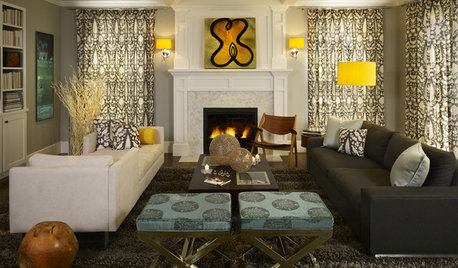
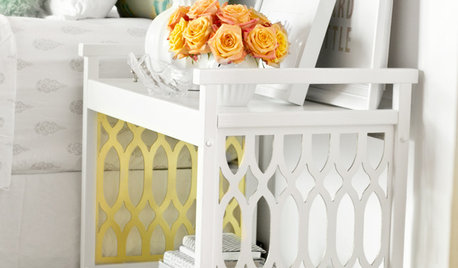
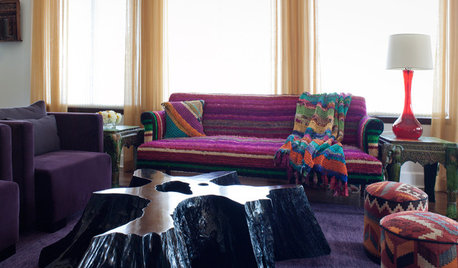
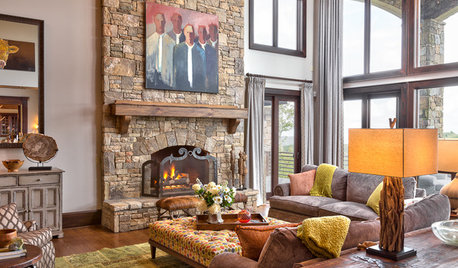
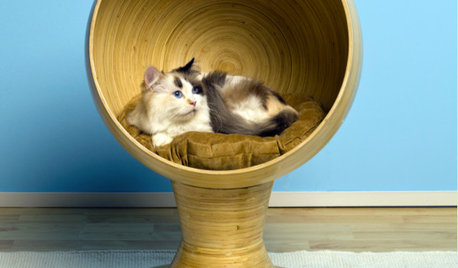
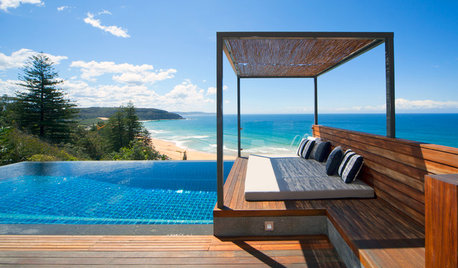
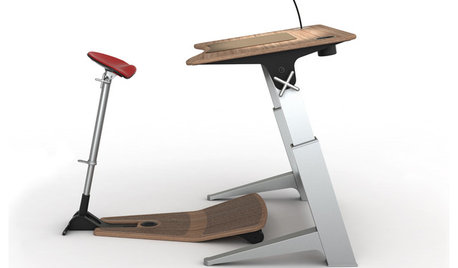
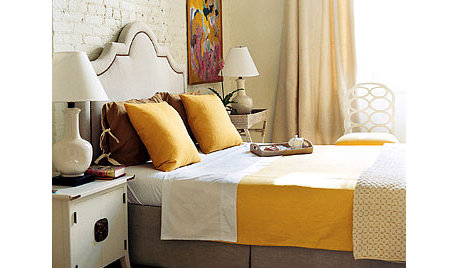
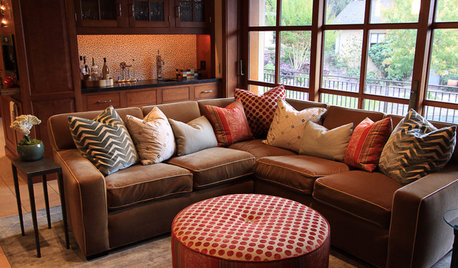






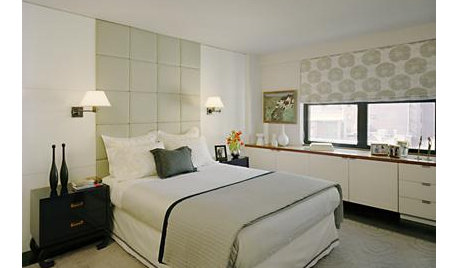

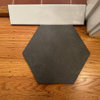
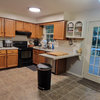

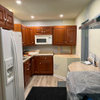
Alex511Original Author